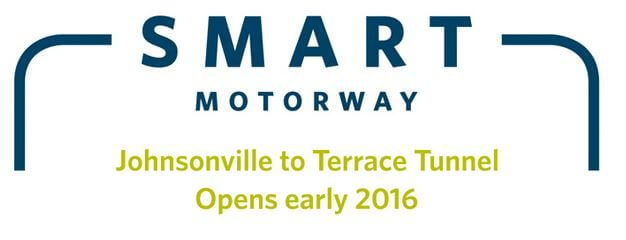
We have only just stepped into 2015 and NZTA is already talking about next year. In early 2016 the motorway between Johnsonville and the Terrace Tunnel will become New Zealand’s first “Smart Motorway”.
What makes it “Smart” ?
A smart motorway is one that is actively monitored and managed by traffic operators through a network of sensors and radars, cameras, and speed and lane control signs. Operators see or are alerted to slowing traffic or an incident, and adjust the speed limit and lane controls if necessary to stop congestion before it starts. Variable speed and lane control signs can slow traffic down or merge it to other lanes before a driver is able to see a queue or incident ahead. Slowing traffic down aims to reduce the stop/start nature of congestion, because traffic moving smoothly but more slowly gets to its destination faster.
Smart motorways:
- use technology to smooth traffic flows
- make journey times more reliable
- reduce journey costs for people and businesses
- reduce crashes (active motorway management has resulted in 15-30% fewer collisions in Europe)
- slow traffic near a crash site or other incident to keep people involved or responding to the incident safe
- produce results when everyone does their bit and follows instructions.
But a Smart Motorway only does half the work to make a smart motorway work not only does it take a team of people to maintain and monitor the motorway but it also needs you the driver to do your bit:
So all road users get to enjoy the benefits of a smart motorway, everyone has to do their bit. For drivers this means observing and following instructions on the variable speed and lane control signs. It’s as simple as staying in your lane as much as possible and sticking to the speed limit.
Use emergency breakdown bays only for genuine emergencies. When a vehicle pulls into an emergency breakdown bay, Wellington Traffic Operations Centre (WTOC) staff will be alerted via detectors and cameras. They’ll dispatch a traffic officer to check on the people in the vehicle. WTOC operators will also be able to close a lane behind the emergency breakdown bay to allow the driver to re-join the flow of traffic safely.